Reflecting on the Urban River in India
In the fast-paced urbanization of India’s cities, it can be hard to find public open spaces to take refuge from the day-to-day hustle and bustle. Ahmedabad, one of the countries mega-cities has recently added an 11km stretch of riverfront to the city’s meagre tally of public space, which has had significant impacts on residents – for both good and bad.
I am coordinating an ongoing research collaboration between the Department of Landscape with Prof. Manvita Baradi at the Faculty of Management at CEPT University, Ahmedabad. We have been bringing together a network of people to examine how the Sabarmati River has changed over time.
In what seems to be a rite of passage in any city’s development, Ahmedabad’s river, the Sabarmati, had been abused, polluted and effectively disowned by the municipal authority and many residents. Around the world, cities like Ahmedabad turn their backs – and the backs of riverbank buildings – on their rivers to become the dumping ground of effluents and industrial and domestic waste. The Sabarmati riverbanks were also where a large slum community lived for over 40 years, which provided a very precarious if not centrally located home in the city.
With rapid urbanisation, the river has changed in different ways. The Sabarmati which divides the city east to west, used to be seasonal – a monsoon river – changing its course over time. Within living memory, it was mostly a dry riverbed for much of the year, allowing diverse activities such as drying textiles, an annual circus and informal cricket matches. The city’s municipal authority decided to turn the river into a permanent and channelized body of water – from a river to a pond as some of our interviewees describe it. This has meant significant changes to the river’s ecology which was not at all considered in the river’s design and construction. A large boat with a ‘skimming’ contraption can often be spotted out on the water regularly removing algae, exacerbated by the water’s negligible flow. Our conversations with users and professionals raise questions over how much water is being lost to evaporation, if there has been a significant increase in mosquitos, and just how hot the riverfront promenades get because of the exclusive use of concrete as construction material.
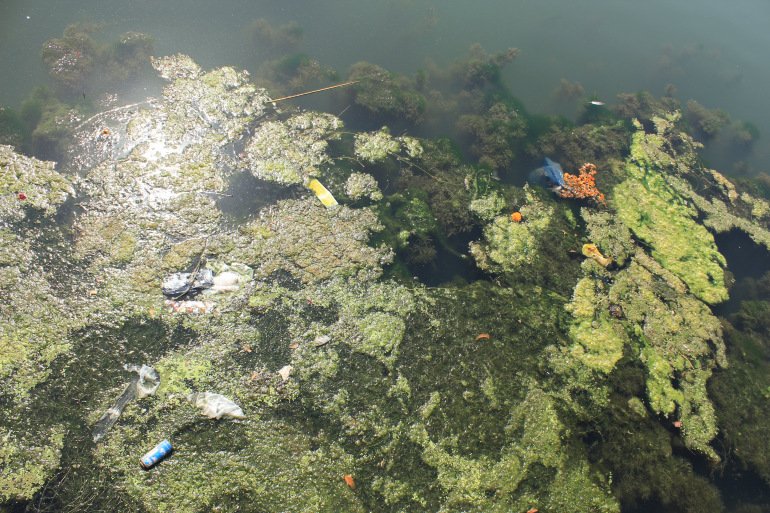
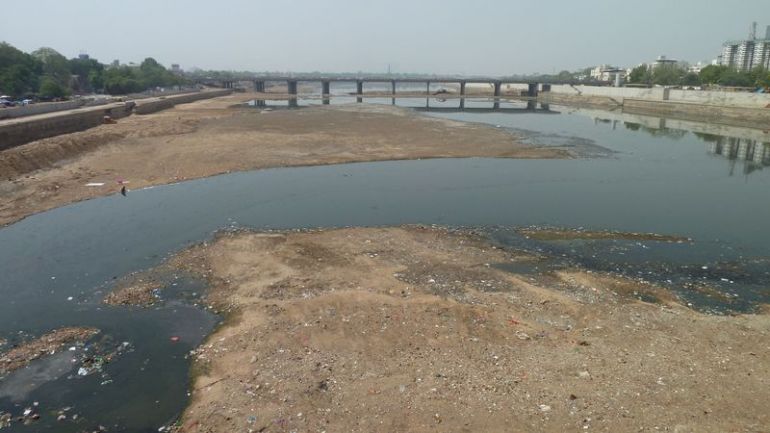
A lot has already been written about the Sabarmati Riverfront project, in particular about the regeneration process, by Prof. Renu Desai[1] among others. This included the forced relocation of slum dwellers from the riverfront to locations far away from their once-central location. While the quality of housing and workplace infrastructure might be improved, the displaced residents and workers we interviewed were not happy with their isolation many kilometres away from their work locations, families and social networks.
Our work so far shows that there also needs to be more attention focused on the Riverfront’s design and management. This is a city-scale project where the river has been used as an emblem of the city’s identity. It has won national awards, but it must come in for criticism, not least for the sheer amount of concrete used. I’ve already mentioned the poor ecological quality of the water but there are other shortcomings on the riverfront itself. The poorly-sited trees along the promenades mean that the waterfront is deserted at all but the coolest hours of the day. While the water does provide a breeze, the lack of shade can make the waterfront a very unpleasant place to be.
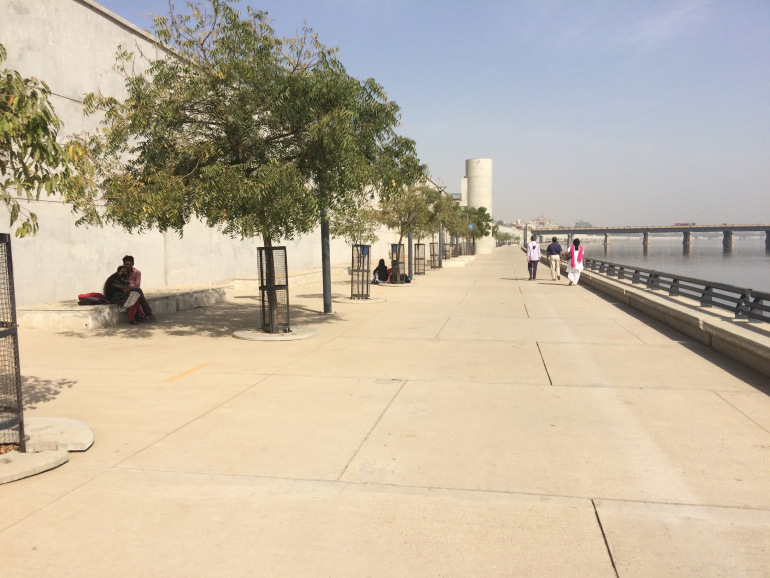
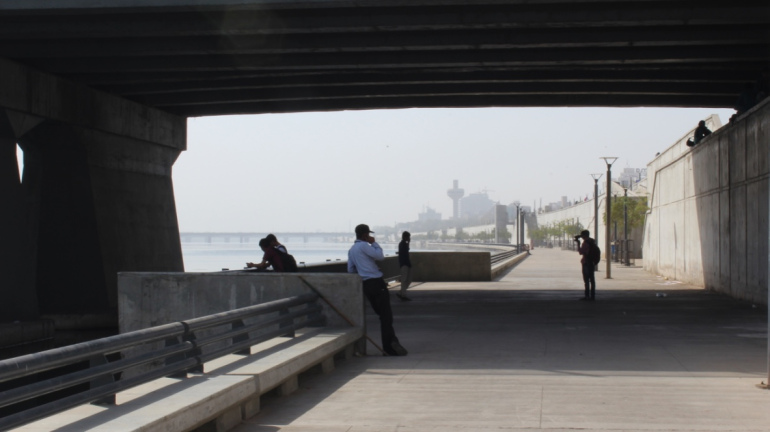
Having said all this, the Riverfront provides the city with a new public space that it has never had before. The users we talked to on the promenades were very happy with the Riverfront, but its novelty means that only a fraction of residents currently use it. Partly that is because only a handful of high-profile events take place there including an annual kite festival and flower show. Partly it’s because spaces are still under construction along the river promenades, and one of them – the Sabarmati Riverfront Park (Subhash Bridge) – has an entry fee, which further muddies the waters of how open and accessible is the city’s riverfront.
It’s clear that the riverfront is slowly becoming a destination that people use to get away from the busy city. What the Riverfront will look like in 5, 10, 50 years remains to be seen. The city’s vision is “to provide Ahmedabad with a meaningful waterfront environment along the banks of the Sabarmati River and to redefine an identity of Ahmedabad around the river”. This will bring with it skyscrapers and a big change to the city’s skyline. We watch with interest to see how the Riverfront changes from a concrete channel that could have been poured in any city, to an Indian and an Ahmedabadi urban landscape.
The Reflecting on the River network is holding a seminar in Sheffield in June 2016. Contact Nicola for details on [email protected] Parts of this blog will be also included in a forthcoming article in the Indian publication, Financial Chronicle (BUILD).
Twitter: @DrNicolaDempsey #reflectingontheriver
http://www.place-keeping.org
http://www.sheffield.ac.uk/landscape/staff/profiles/nicoladempsey
[1] http://counterview.org/2014/05/20/failing-to-be-inclusive-for-urban-poor-ahmedabads-riverfront-project-exemplifies-neoliberal-transformation-in-urban-gujarat/
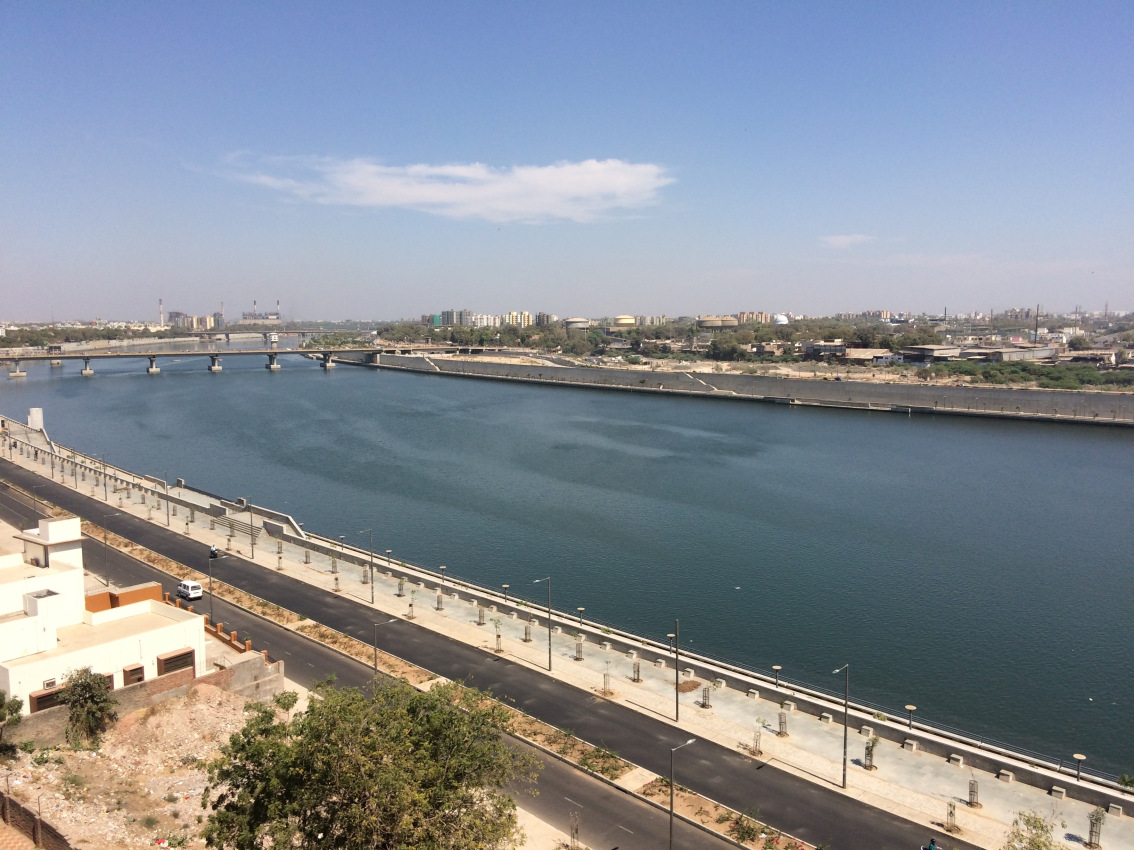

It seems urban freshwater river systems are all too often an early casualty of a city’s industrialisation process sadly.
In Sydney Australia we’ve had a similar experience with our ‘Tank Stream’. It was once a thriving little river that nourished the local Indigenous population for tens of thousands of years. Due to irresponsible and short sighted environmental management however within a couple of decades after European settlement it had became an open sewer. After a few decades it was covered over with stone slabs and more or less forgotten about. More: http://tankstream.org.au/history
I think there is a growing appreciation among policy makers and the broader community about the importance of river habitat conservation in our urban centres though. The experience of South Korean in restoring the Cheonggyecheon River show whats possible once the public mind has been mobilised.
Enjoy your blog, thank you ~ Claude
LikeLike
I am an Urban Designer from India with 18 years of professional experience. The blog and the paper seems positively critical about the design of Sabarmati Riverfront. The project is one of the first modern riverfront projects mimicking the western riverfronts which were built on perennial rivers. In tropical countries the rives are always seasonal and the beauty of the river is in its seasonality. Sabarmati Riverfront design is completely disconnected with this understanding. However, the main claim about the project is that it has worked for socio-economic development of the city (you can see works of Chirayu Bhat from CEPT university in ResearchGate). I am very keen to read more from you about what happened on the social front. Whether the urban space of riverfront encouraging social interaction. Whether it has sanitised few social groups or social classes.
Look forward to hear from you.
LikeLike